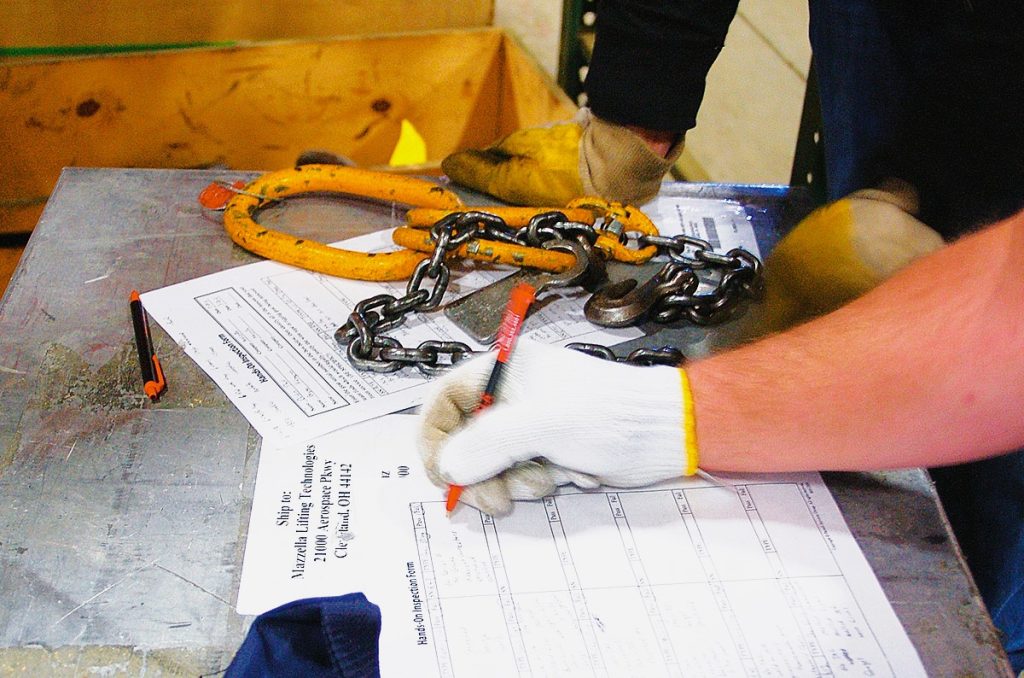Rigging equipment plays a pivotal role in several fields, where moving heavy loads is essential. The significance of these essential tools cannot be overstated, as they are the backbone of industries ranging from offshore operations, manufacturing, and construction. Their absence can prove to be a considerable setback, as it can lead to project delays, production losses, and damage to goods and equipment. By using different types of rigging equipment, including slings, hooks, hoists, and shackles, bulky objects can be seamlessly and effortlessly transported without causing any harm. One of the key aspects of using rigging equipment is safety and structural reliability. Thus, there is a need for regular and thorough safety checks and inspection of these tools, ensuring their seamless and smooth performance. By ensuring the safety of rigging equipment, we can ensure that both the equipment and the workers who operate them are protected, resulting in the flawless completion of any project requiring moving heavy loads.

Rigging equipment encompasses a variety of tools and devices used to lift, move, and secure heavy loads.
Here is a list of common rigging equipment:
Slings:
- Wire Rope Slings
- Chain Slings
- Synthetic Web Slings
- Round Slings
2. Hooks:
- Sling Hooks
- Clevis Hooks
- Eye Hooks
3. Shackles:
- Anchor Shackles
- Chain Shackles
4. Hoists:
- Electric Hoists
- Chain Hoists
- Lever Hoists
Lifting Hardware:
- Turnbuckles
- Eyebolts
- Swivels
- Lifting Clamps
6. Blocks and Pulleys:
- Snatch Blocks
- Single Sheave Pulleys
- Double Sheave Pulleys
7. Winches:
- Hand Winches
- Electric Winches
- Hydraulic Winches
8. Rope:
- Manila Rope
- Synthetic Rope
- Wire Rope
9. Rigging Chains:
- Grade 80 Alloy Chains
- Grade 100 Alloy Chains
10. Load Binders:
- Lever Load Binders
- Ratchet Load Binders
11. Rigging Accessories:
- Swivel Connectors
- Master Links
- Quick Links
- Links and Rings
12. Tirfor or Griphoist:
- Manual hoisting and pulling device
13. Spreader Bars:
- Used to distribute the load of a lift over a larger area.
14. Wire Rope Clips:
- Used to secure the ends of wire rope.
15. Taglines:
- Control lines to prevent loads from spinning or to guide loads during lifting.
16. Dynamometer:
- Measures force, tension, and weight during lifting operations.
17. Load Cells:
- Electronic devices that measure force or load.
18. Rigging Bags and Buckets:
- Used to store and transport small rigging components.
19. Rigging Mats:
- Placed under crane outriggers to distribute load and protect surfaces.
20. Safety Equipment:
- Harnesses, lanyards, and other fall protection gear for personnel involved in rigging.
The objective of rigging equipment and inspection training is to ensure the safe and efficient use of lifting and rigging equipment in various industries. This training aims to equip personnel with the knowledge and skills necessary to properly inspect, maintain, and use rigging equipment, ultimately contributing to workplace safety.
Here are the key objectives:
Safety Awareness:
- Instill a strong understanding of the importance of safety in rigging operations.
- Create awareness about potential hazards associated with improper rigging practices.
Equipment Familiarity:
- Ensure participants are familiar with various types of rigging equipment, including slings, hooks, shackles, hoists, and lifting hardware.
Proper Equipment Use:
- Train individuals on the correct methods for selecting, attaching, and using rigging equipment based on load characteristics and rigging configurations.
Inspection Skills:
- Develop the ability to visually inspect rigging equipment for wear, damage, and other signs of potential failure.
- Teach participants how to interpret manufacturer markings and specifications.
Regulatory Compliance:
- Educate participants on relevant safety regulations, industry standards, and guidelines pertaining to rigging operations.
- Ensure compliance with legal requirements to avoid penalties and liability issues.
Load Handling Techniques:
- Train personnel on proper load handling techniques to prevent accidents and ensure stability during lifting operations.
Recordkeeping:
- Emphasize the importance of maintaining accurate records of equipment inspections, maintenance activities, and load tests.
Emergency Response:
- Provide training on emergency procedures and response in the event of rigging equipment failure or accidents.
Qualified Personnel:
- Ensure that individuals responsible for rigging inspection and operations are qualified, competent, and continually updated on industry best practices.
Risk Mitigation:
- Teach strategies for identifying and mitigating risks associated with rigging operations.
- Encourage proactive measures to prevent accidents and injuries.
Continuous Improvement:
- Foster a culture of continuous improvement by encouraging feedback and the implementation of lessons learned from incidents or near-misses.
Environmental Considerations:
- Highlight the impact of environmental factors on rigging equipment and stress the importance of adjusting practices accordingly.
Improving workplace safety is a top priority for organizations worldwide. To achieve this goal, it is essential to establish clear objectives and pursue them with unwavering determination. Rigging equipment and inspection training play a vital role in creating a safer working environment by reducing the likelihood of accidents, injuries, and equipment malfunctions. These training programs provide employees with the knowledge and skills necessary to carry out their tasks with the utmost care and attention to detail. Without proper training, employees can be more prone to errors that can cause hazardous situations. Regular training and reinforcement of these principles are crucial in maintaining a robust safety culture within organizations. By investing in rigging equipment and inspection training, organizations can establish a safe and secure work environment where employees can excel and achieve their goals.
